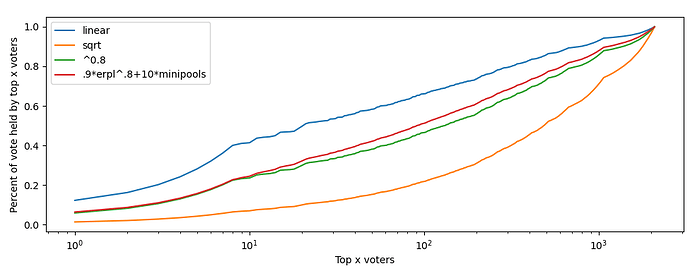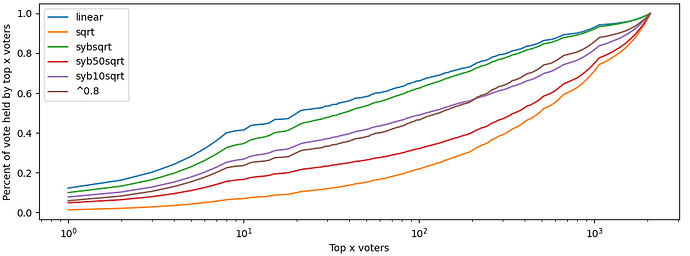The Max Effective Stake for LEB8s vote has demonstrated that the RP community has the ability organize and reach a productive conclusion to a contentious issue.
Unfortunately, it also highlights the amount of damage that one evil whale can do if they game the quadratic voting power mechanism. Referencing @Valdorff’s comment shown below, a whale with power on the order of a few hundred votes could potentially turn that into a few thousand votes and single-handedly determine the winning outcome of RPIP-8.
https://dao2.rocketpool.net/t/research-rpip-4-upgrades/1046/5
For this reason, I propose that we immediately modify the voting power calculation to make voting power scale linearly with staked RPL. While this would give our benign whales more voting power relative to non-whales, it would also enable them to properly defend the community against an attacker without having to game the system themselves.
While linear voting power may not be an ideal solution for the long term, it can be modified later if/when we have a solution for sybil resistance, etc.
I hope that with enough support for this proposal, we can quickly get it to a snapshot vote and implemented.

